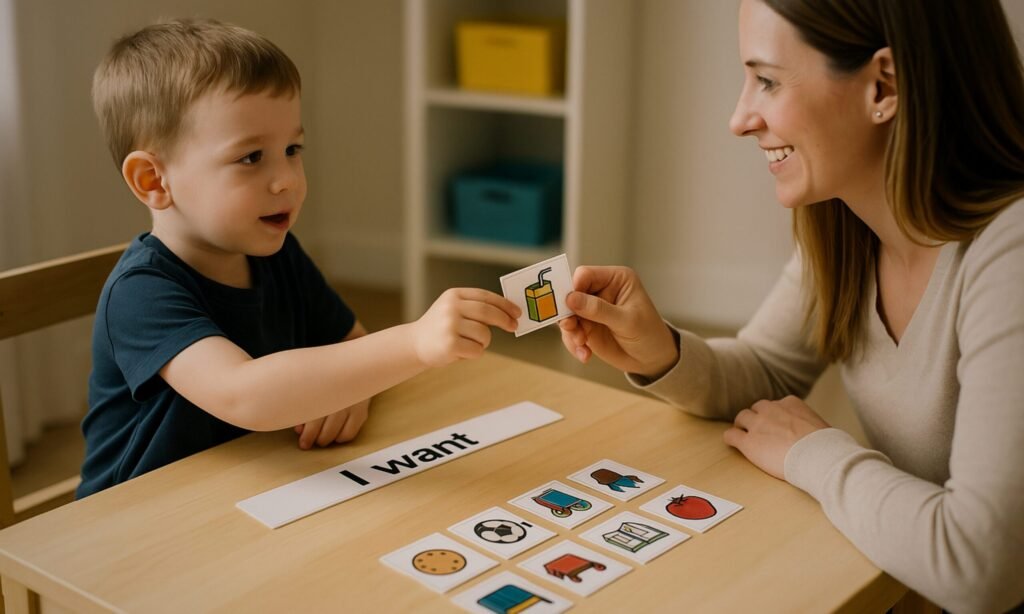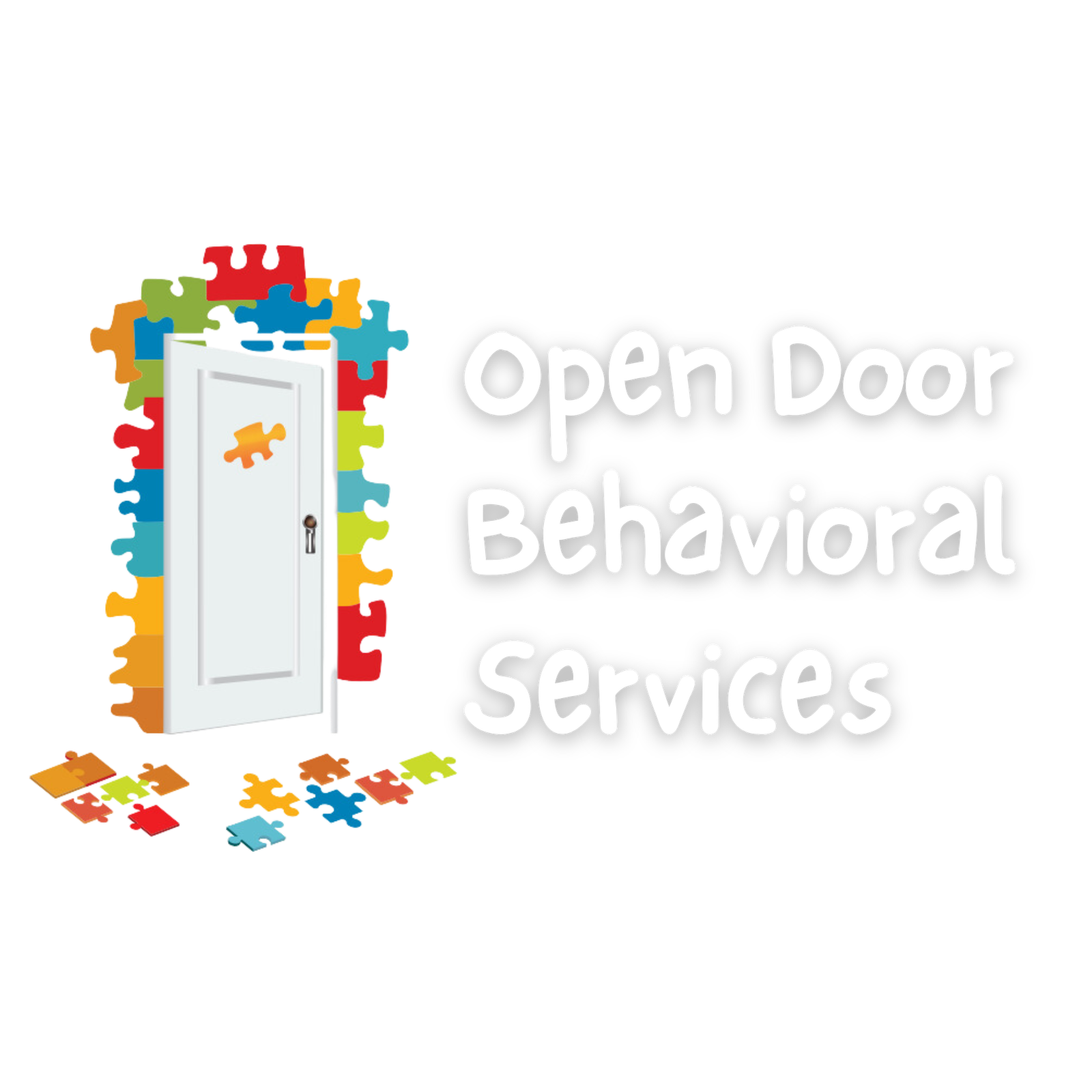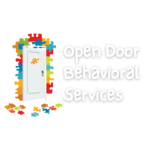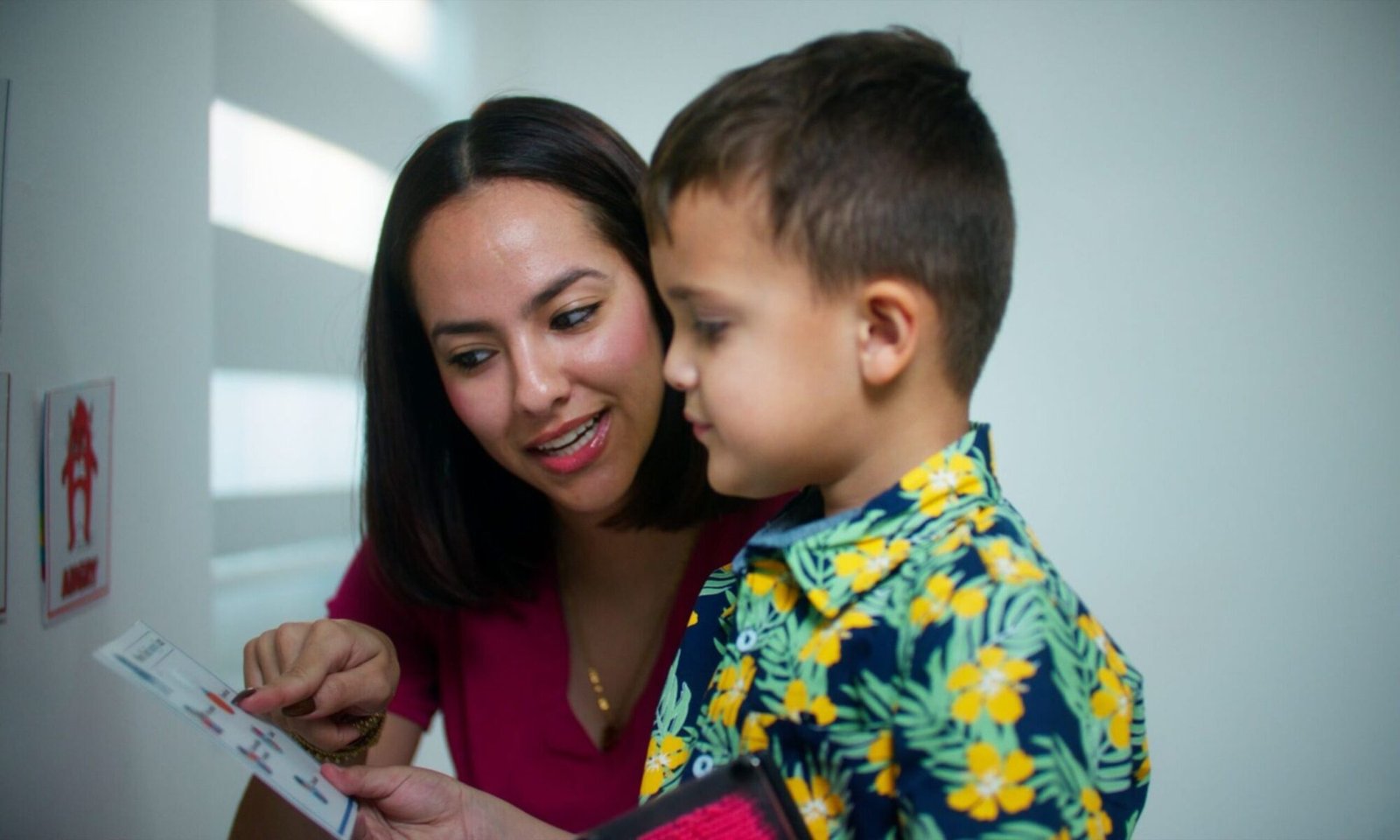The Picture Exchange Communication System (PECS) is a widely used ABA therapy method that teaches functional communication to children with limited or no verbal skills. In this post, we’ll explore the six phases of PECS and how each step supports language development and independence.
Learn more about our ABA Therapy Services and how we work with families at Open Door.
Phase 1 of Picture Exchange Communication System: How to Communicate
Objective: Teach the child to initiate communication by exchanging a picture for a desired item or activity.
Process:
- A trainer and caregiver help the child begin.
- The child picks up a picture of a preferred item and hands it to a communication partner to receive that item.
- Physical prompts (e.g. hand-over-hand guidence) are used initially, then faded to promote independence.
Phase 2 of PECS: Distance and Persistence
Objective: Encourage the child to initiate communication from different locations and with greater effort.
Process:
- The child practices retrieving the picture and approaching a partner, even if they’re not close by or directly engaged.
- This builds persistence and generalizes communication across settings.
Phase 3 of PECS: Picture Discrimination
Objective: Teach the child to choose the correct picture from a selection.
Process:
- Begin with two images: one preferred and one neutral or less preferred.
- Gradually introduce more options as the child practices.
- The child learns to discriminate between multiple images and make the right choice consistently.
Phase 4 of PECS: Sentence Structure
Objective: Help the child construct simple sentences to make requests.
Process:
- Introduce a sentence strip beginning with “I want.”
- The child places “I want” next to the picture of the desired item and gives the sentence strip to the communication partner.
- This fosters more structured language use.
Phase 5 of PECS: Answering Questions
Objective: Teach the child to respond to questions like “What do you want?”
Process:
- The child uses the sentence strip to respond directly to the question.
- This enhances the child’s ability to engage in social and functional communication.
Phase 6 of PECS: Commenting
Objective: Encourage spontaneous expression beyond requesting.
Process:
- Introduce sentence starters like “I see,” “I hear,” or “I feel.”
- The child constructs comments such as “I see a dog” or “I hear music.”
- This develops more dynamic and independent communication skills.

Why PECS Is Effective in ABA Therapy?
- Picture Exchange Communication System focuses on functional communication, not just speech.
- Reinforcement plays a key role: communication is immediately rewarded with access to the requested item.
- Each phase builds on the last, promoting steady progress toward more complex communication.
Interested in learning more?
Contact Open Door Behavioral Services to schedule a consultation and bring ABA strategies into your home life today.
Stay connected and get practical tips, inspiration, and updates by following us on Instagram: @opendoorbehavioralservices
Together, we build progress — one step, one strategy, one success at a time.


